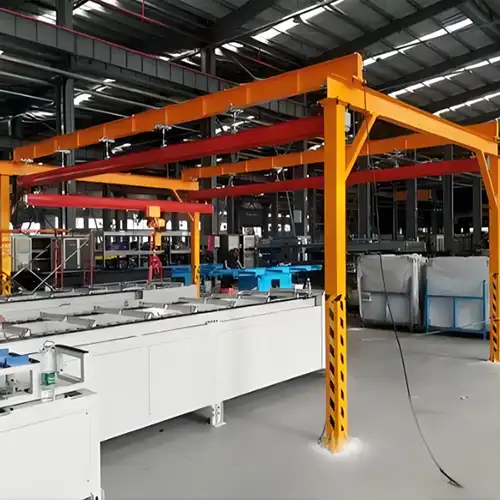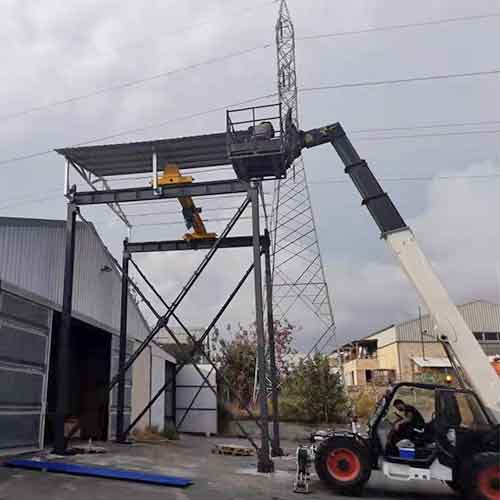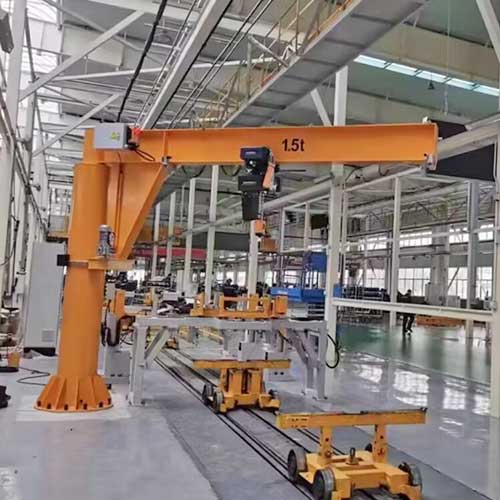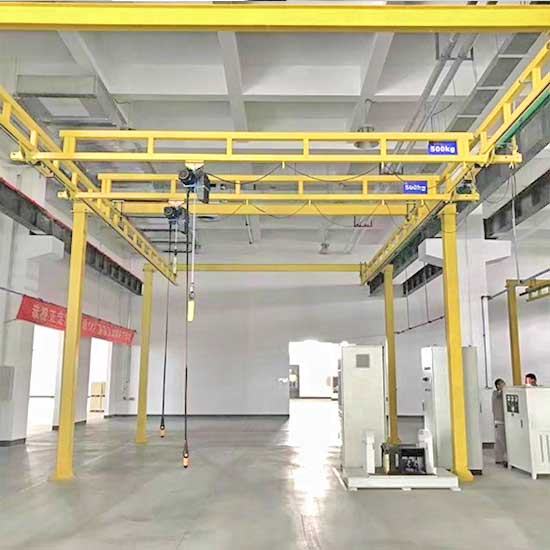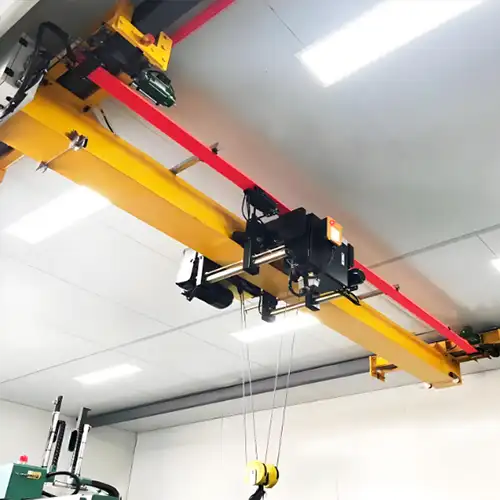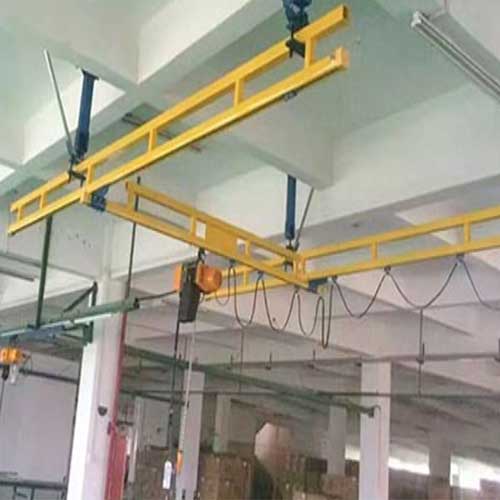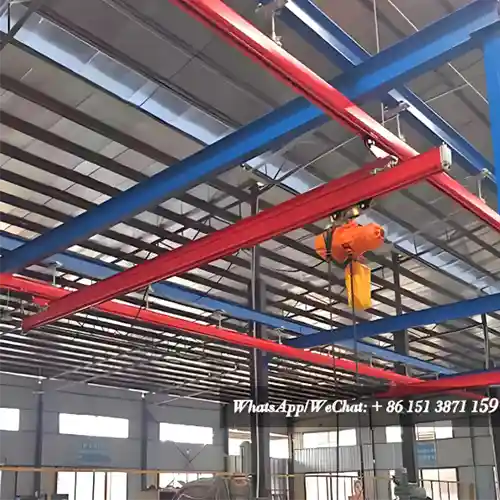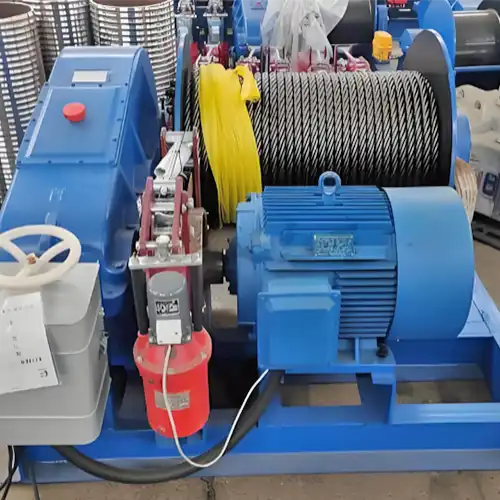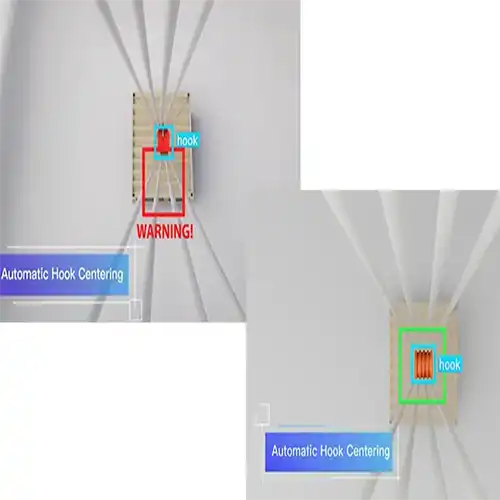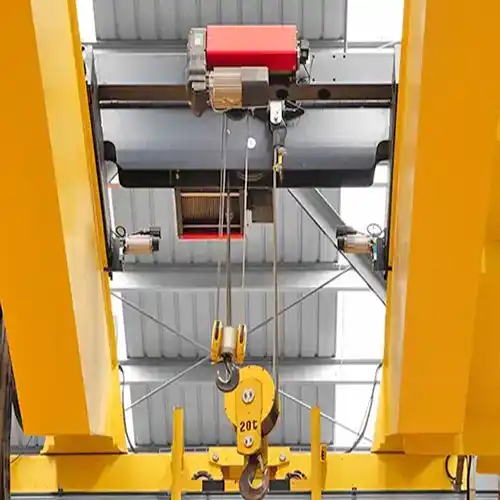Free Standing Crane Systems: Load, Bay Size, Installation
Explore key factors—load capacity, bay size & installation planning—for efficient, safe free standing crane system setups. Get tailored freestanding crane!
Category: Featured
Your Trusted Freestanding Crane Manufacturer & Supplier
Freestanding Crane for Sale
Free Standing Crane Systems: Load, Bay Size, Installation
Introduction
Free standing crane systems are a practical solution when ceiling or wall-mounted cranes aren't an option. Instead of relying on existing building structures, these cranes come with their own support framework—usually columns and beams—that stand independently on the floor. This makes them especially useful in buildings without strong overhead support or in open areas like warehouses and workshops.
You'll often find free standing cranes in places such as manufacturing plants, automotive workshops, metal fabrication shops, and even large storage yards. Anywhere you need a reliable way to lift and move heavy loads but don't have the structural support overhead, these cranes fit right in.
Understanding the key factors like load capacity, bay size, and installation planning is crucial. Getting these right from the start helps ensure the crane works safely and efficiently without unexpected delays or added costs later on. If you overlook these details, you could end up with a crane that doesn't fit your workspace or can't handle the loads you need — which is a headache nobody wants. So, let's break down what you need to know before making a decision.
What Is a Free Standing Crane System?
A free standing crane system is basically a crane that doesn't rely on the building's roof or walls for support. Instead, it has its own framework—usually strong vertical columns and horizontal beams—that stand on the floor and carry the entire load. This setup gives you a crane that's flexible and can be installed almost anywhere there's enough floor space.
Key Components of a Free Standing Crane:
- Support Columns: These vertical steel structures hold up the entire crane system. They're anchored firmly to the floor to keep everything stable.
- Runway Beams: Horizontal beams that connect the columns and support the bridge crane's movement.
- Bridge: The main horizontal beam that travels along the runway beams, carrying the hoist.
- Hoist: The lifting device attached to the bridge, which actually lifts and lowers the load.
- End Trucks: Located at each end of the bridge, these wheels run along the runway beams to allow the bridge to move back and forth.
Types of Free Standing Crane Systems
- Free Standing Bridge Crane: The most common type. It features a bridge that spans between two runway beams supported by columns. Ideal for heavy-duty lifting across large bays.
- Freestanding Jib Crane: Has a single horizontal arm (jib) mounted on a vertical column. It's great for smaller workstations or areas where full-span bridge cranes aren't needed.
- KBK Modular Systems: These are lighter, modular crane systems made up of pre-engineered components. They're flexible and easy to install, perfect for medium-duty loads and customized layouts.
How Do They Compare to Ceiling-Mounted Cranes?
Unlike ceiling-mounted cranes, free standing systems don't depend on the building structure to carry their weight. This means:
- They can be installed in older buildings or warehouses without reinforced ceilings.
- There's no risk of damaging or overloading the roof structure.
- Installation can be easier since you don't have to modify the building.
- However, free standing cranes take up floor space, which could reduce usable workspace. Ceiling-mounted cranes keep the floor clear but require strong, reinforced ceilings.
In short, free standing cranes offer more flexibility but need careful planning around floor layout and space.
Load Capacity Considerations
Load capacity is the maximum weight a crane can safely lift, known as the rated capacity. Exceeding this limit risks damage and safety issues, so choose a crane that meets your heaviest loads.
Common capacities range from 0.5 ton up to 10 tons and beyond, depending on your needs.
Factors affecting capacity include:
- Duty cycle: How often and hard the crane works
- Hoist type: Wire rope hoists handle heavier loads better than chain hoists
- Structure and foundation: Columns, beams, and floor must support the crane and load safely
Make sure the crane meets standards like ISO, CMAA, or FEM to ensure safety margins and compliance.
Picking the right capacity and a reliable design means safer, smoother lifting without surprises.
Bay Size and Coverage Planning
Bay size refers to the area the crane covers—measured by length, width, and height. It defines how far the crane can reach and move within your workspace.
How to Determine Bay Size
Start by looking at your facility's layout. Consider where workstations, storage racks, or machinery are placed and plan the crane's path to cover these areas efficiently. Also, think about the flow of materials and clear handling routes to avoid bottlenecks.
Key Components Affecting Bay Size
- Bridge Span: This is the distance the crane's bridge travels between the runway beams. It determines how wide the crane can reach.
- Runway Length: The length of the beams the crane runs on controls how far the crane moves along the building.
- Column Spacing: The distance between support columns affects crane movement and the open space below. Wider spacing gives more working room but needs stronger beams.
Multi-Bay Setups: Expanding Crane Coverage for Larger Operations
In larger facilities, a single bay crane might not be enough to cover all the work areas or material handling zones. That's where multi-bay setups come in. These systems connect two or more crane bays side by side or in series, effectively expanding the crane's reach across a wider space.

How Multi-Bay Setups Work
Each bay has its own pair of runway beams supported by columns, and cranes can move independently within each bay. In some designs, cranes can also transfer loads between bays by crossing from one runway system to the next. This creates a seamless handling path over a much larger footprint.
Benefits of Multi-Bay Systems
- Extended Coverage: You get more reach without sacrificing lifting capacity or performance. This is especially useful in warehouses, fabrication shops, or assembly lines with long or segmented layouts.
- Flexible Load Transfer: Loads can move smoothly from one bay to another, reducing the need for additional handling equipment like forklifts or conveyors.
- Improved Workflow: Material flows naturally between different sections, saving time and labor.
- Scalability: As your operation grows, you can add more bays or extend runway beams to meet new demands without replacing the entire crane system.
Planning Considerations
- Column Placement: Proper spacing between columns is key to ensure cranes can move freely without obstruction while maintaining structural stability.
- Runway Alignment: Accurate alignment of runway beams between bays is crucial for safe load transfer and smooth crane movement.
- Control Systems: Multi-bay cranes may require synchronized control or coordination to avoid collisions and optimize operation.
- Foundation Strength: Each bay needs a solid foundation designed to handle the combined loads and stresses of multi-crane operations.
By carefully planning your bay sizes and integrating multi-bay crane systems, you can cover large or complex facilities efficiently. This reduces bottlenecks and helps keep your material handling smooth, safe, and productive across the entire workspace.
Installation Planning
- Site Preparation -Before installation, make sure the floor is strong enough to support the crane and its loads. Concrete should meet specified strength requirements to handle the weight and vibrations. Proper anchoring with foundation bolts is essential to keep the crane stable.Also, check for enough clearance around the crane—side space, overhead height, and any floor obstructions like pipes or equipment—to ensure safe and smooth operation.
- Structural & Layout Requirements-Measure the height under hook carefully—that's the space between the floor and the hoist when lifted. This affects what you can lift and move. Also, plan the overall system height to fit inside the building without clashes.
- Integrate the crane layout with existing machinery and structures. The goal is to optimize workflow so materials move efficiently without blocking paths or causing hazards.
- Power Supply & Control-Make sure your site can provide the right electrical power: correct voltage, phase, and a convenient connection point. Choose a control method that fits your operation—pendant controls for close operation, wireless remotes for flexibility, or operator cabins for larger setups.
- Assembly & Installation Timeline-Installation time varies by crane size and complexity. Larger systems take longer for shipping, assembly, and alignment. Pre-fabricated parts speed up on-site work, but expect a few days to weeks depending on project scale.Planning ahead with these factors keeps installation smooth and avoids unexpected delays.
Customization & Expansion Considerations
Many free standing crane systems are designed with flexibility in mind. Modular components make it easier to expand your crane later as your needs grow. For example, you might start with a smaller bay size but add longer runway beams or extra columns down the line.
Some systems offer adjustable bay dimensions or even relocatable frames, so you can change the crane's footprint without a full rebuild. This is handy if your workspace layout changes.
Also, consider hoist compatibility. Choosing a crane that works with different hoist types or allows automation upgrades means you can improve performance over time without replacing the whole system.
Cost Considerations
Several factors influence the total cost of a free standing crane system:
- Load capacity: Higher capacities require stronger, heavier components, which cost more.
- Bay size: Larger spans and longer runways increase material and labor expenses.
- Customization: Tailored designs, special features, or integration with existing systems add to the price.
- Installation complexity: Difficult site conditions or tight schedules can raise costs.
You can opt for a turnkey solution, where the manufacturer handles everything from design to installation, or buy a crane kit to assemble locally, which may reduce expenses if you have skilled workers.
Typical cost ranges vary widely depending on these factors, but understanding what drives price helps you plan your budget effectively.
Send Us An Inquiry
When selecting a free standing crane system, it's important to carefully consider your load capacity, bay size, and detailed installation planning. These three elements directly affect how well the crane will perform, how safely it operates, and how efficiently it fits within your workspace.
- Load capacity must match or exceed your heaviest lifts, considering how often and how intensively the crane will be used.
- Bay size planning ensures the crane reaches all necessary areas without obstructing workflow or crowding the floor.
- Installation planning covers everything from floor strength and foundation work to electrical setup and clearances.
Engaging with experienced crane professionals early on helps you avoid costly mistakes, ensures your system complies with safety standards, and results in a solution tailored to your exact needs.
If you're ready to invest in a free standing crane system, start by sending us your facility layout and lifting requirements. The more details you provide—such as bay dimensions, maximum loads, and power supply information—the more accurate and tailored our consultation and quotation will be.
We offer free, no-obligation consultations to guide you through the process and recommend the best crane system for your needs. Reach out today to get started with a solution that's safe, efficient, and designed to grow with your business.
Related Products
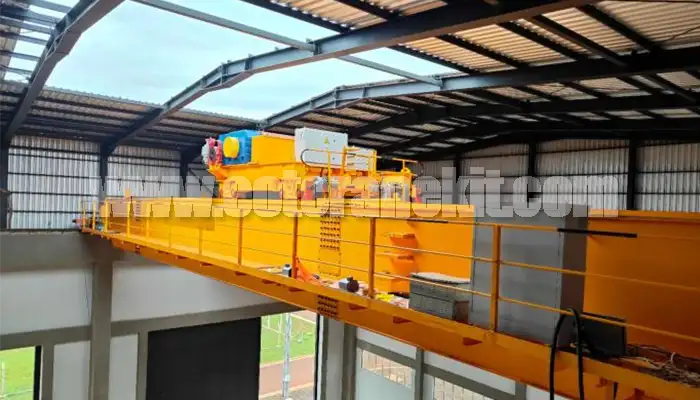
Latest project
150 Ton Overhead Crane Installation Feedback – Paraguay Case
QDX 150 ton overhead crane in action in Paraguay. Installation photos, video, and client feedback show performance, safety, and heavy-lifting efficiency.
Free consultation to Confirm Parameters & Specifications and Get
Latest Crane Price & Crane Rate.
- Types of overhead cranes : _______?
- Optional: Overhead travelling crane, goliath gantry crane,Slewing jib crane, Single girder or double girder crane,small portable crane or kbk crane, etc.
- Capacity of overhead crane: _______?
- Optional: 0.25ton, 0.5 ton, 1 ton, 2 ton, 3ton, 5 ton, 10 ton,15ton, 20ton, 25 ton, 30ton,35ton, up to 550ton, etc.
- Crane span & lifting height : _______?
- Crane travelling length : _____?
- Control of overhead crane:_______?
- Optional: pendant/ remote/cabin control
- Voltage supply of overhead crane:_____?
- Eg,: 380V50/60HZ,3Phase or others,etc.
- Application/usage of crane:_______?
- Eg,: Steel mill, ,injection mold, cement,stone, concrete,granite, general manufacturing, etc.
Just leave a message via the contact form and our hoist and crane engineer will contact you with in 24working hours.
Get In Touch
